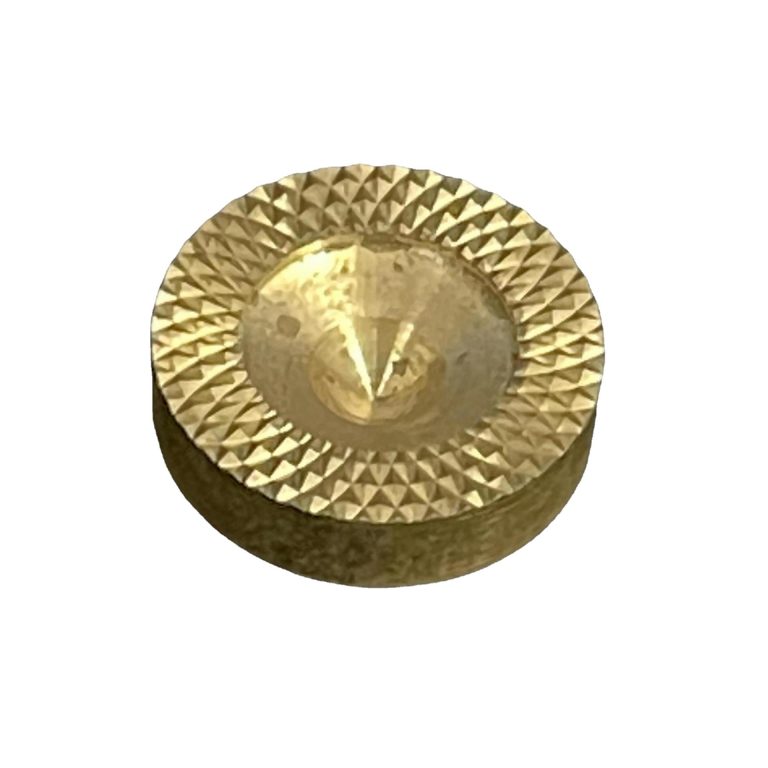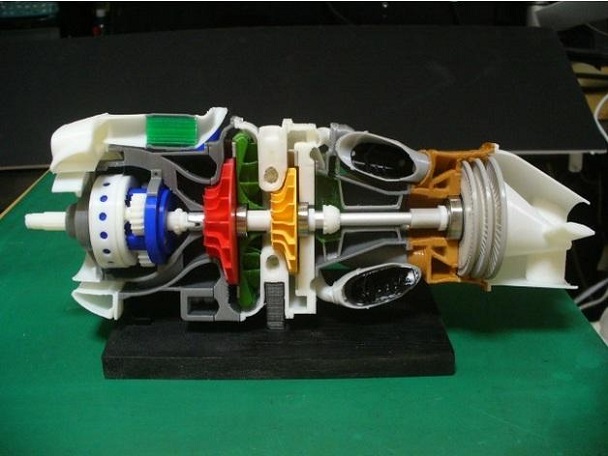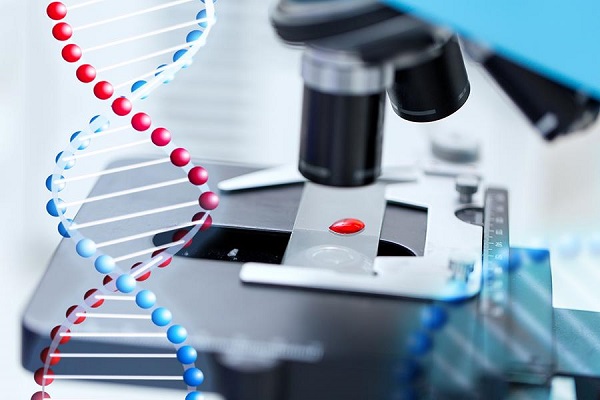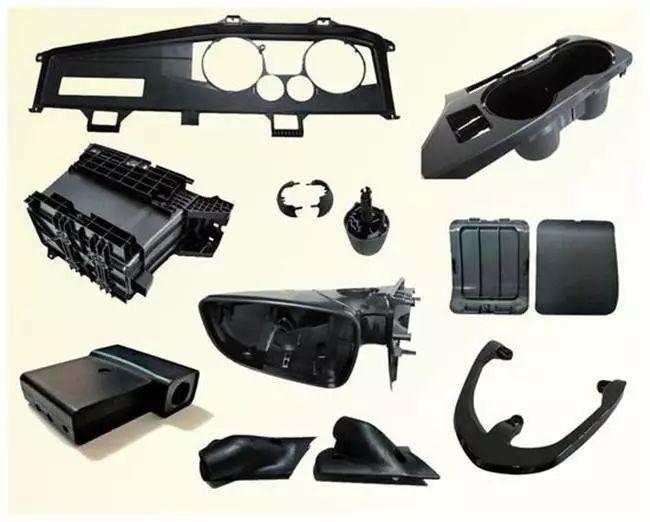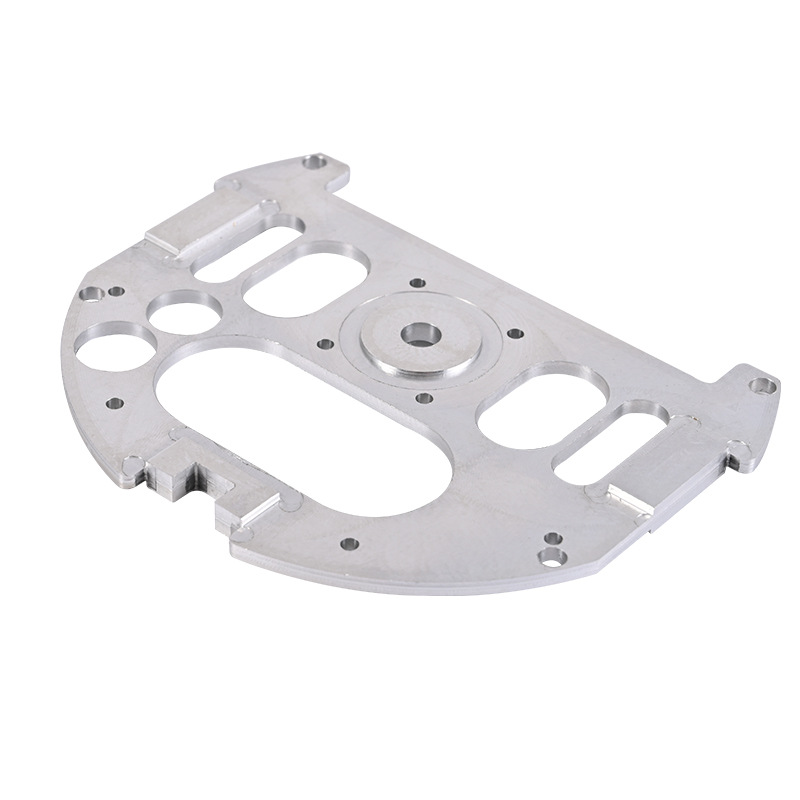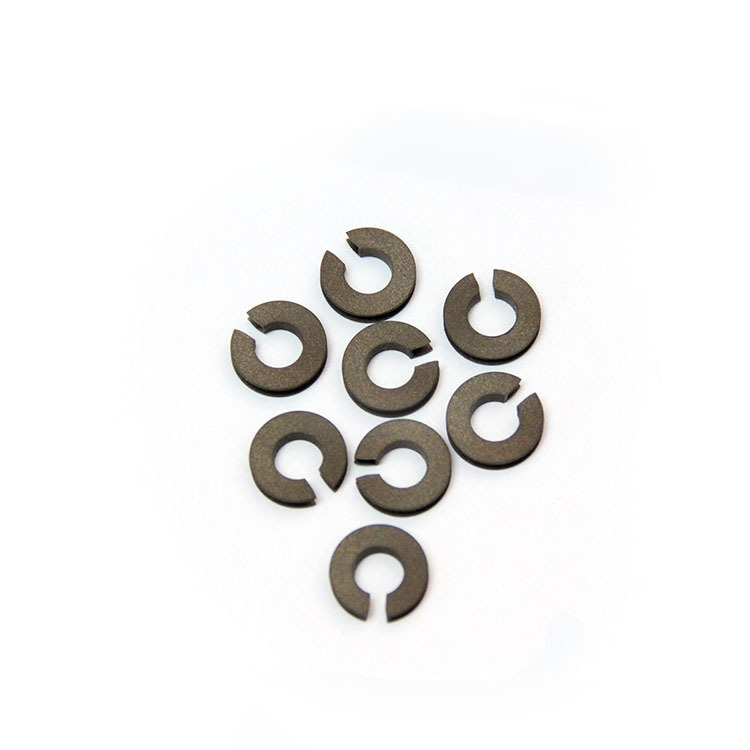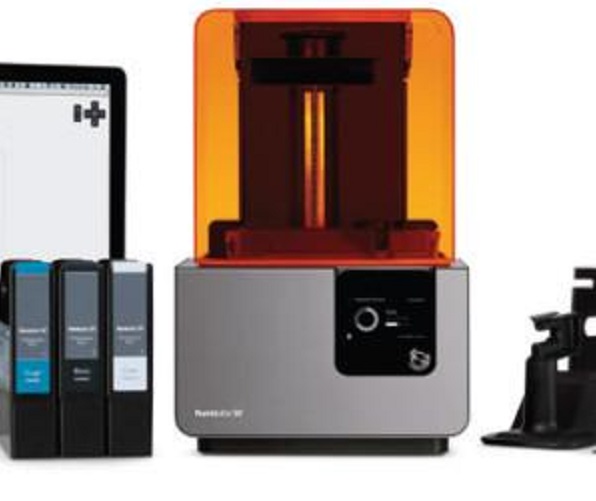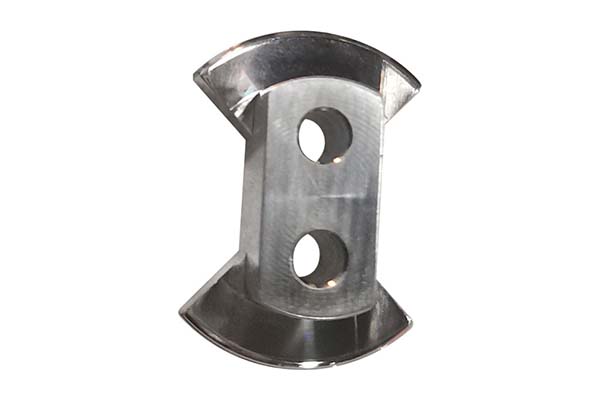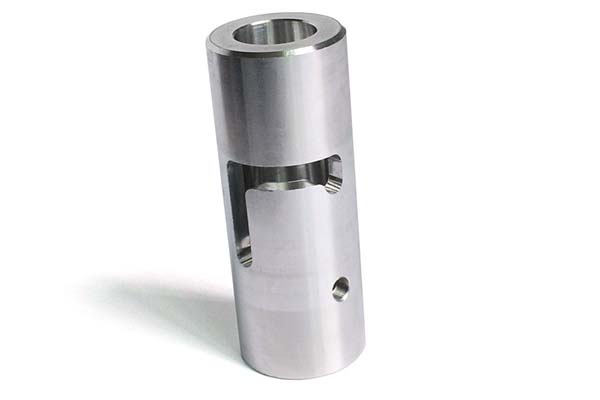1. Introduction
In the dynamic landscape of modern manufacturing, 3D printing has emerged as a revolutionary force, transforming the way products are developed, prototyped, and perfected. This technology, also known as additive manufacturing, has transcended its initial role as a mere prototyping tool and is now deeply integrated into various industries, from aerospace and automotive to healthcare and consumer goods.
The journey of 3D printed products from basic prototypes to refined, high - quality end - products is a fascinating one, filled with technological advancements, material innovations, and changing market demands. Understanding this evolution is crucial for businesses aiming to stay competitive, as well as for enthusiasts eager to explore the full potential of 3D printing.
In this article, Yigu Technology will delve deep into the evolution of 3D printed products from prototypes to perfection. We will explore the technological advancements that have enabled this transformation, the materials used in 3D printing and how they have evolved, the applications of 3D printed products in different industries, and the challenges and future prospects of this exciting technology.
2. The Basics of 3D Printed Prototypes
2.1 How 3D Printing Works
3D printing, also known as additive manufacturing, operates on a fundamentally different principle from traditional manufacturing methods. Instead of subtracting material from a larger block (subtractive manufacturing) or molding materials into a shape (such as in injection molding), 3D printing builds objects layer by layer.
The process begins with a 3D model, which is typically created using computer - aided design (CAD) software. This digital model is a detailed representation of the object to be printed, including its shape, dimensions, and internal structure. Once the 3D model is ready, it is sliced into numerous thin horizontal layers by specialized software. Each layer is like a cross - section of the final object, and the thickness of these layers can range from as little as a few microns to several millimeters, depending on the printer and the desired level of detail.
The 3D printer then reads the sliced data and starts depositing or fusing materials layer by layer. For Yigu Technology example, in fused deposition modeling (FDM), which is one of the most common 3D printing technologies for desktop printers, a spool of thermoplastic filament (such as PLA or ABS) is fed into a heated extruder. The extruder melts the filament and precisely deposits it onto a build platform in the pattern defined by the sliced layer. As the layers are stacked one on top of the other, the object gradually takes shape.
In other 3D printing technologies like stereolithography (SLA), a laser is used to cure (harden) a liquid photopolymer resin layer by layer. Selective laser sintering (SLS) uses a laser to fuse powdered materials, such as nylon or metal powders, into solid layers. Electron beam melting (EBM) is another technique, mainly used for metal 3D printing in high - end applications like aerospace. It uses an electron beam to melt metal powder, creating highly dense and strong metal parts.
2.2 Materials for Prototyping
There is a wide range of materials available for 3D printing prototypes, each with its own set of characteristics that make it suitable for different applications. Here are some of the most common ones:
- PLA (Polylactic Acid):
- Source and Sustainability: PLA is a biodegradable thermoplastic made from renewable resources such as corn starch or sugarcane. This makes it an environmentally friendly option, especially for applications where sustainability is a concern, like in consumer products or educational projects.
- Printing Characteristics: It has a relatively low melting point, usually around 180 - 220°C, which makes it easy to print with desktop 3D printers. PLA is less likely to warp during the printing process compared to some other materials, allowing for the creation of larger and more complex shapes without significant distortion. It also has a pleasant smell during printing, which is a plus for home and office use.
- Mechanical Properties: PLA has good strength and stiffness for a thermoplastic, making it suitable for a variety of prototypes. However, it is relatively brittle and may not be the best choice for applications that require high impact resistance.
- ABS (Acrylonitrile Butadiene Styrene):
- Source and Recycling: ABS is a non - biodegradable thermoplastic made from fossil - fuel - based sources. It is widely used in the plastics industry and is easily recyclable.
- Printing Characteristics: ABS has a higher melting point than PLA, typically around 220 - 250°C. It requires a heated print bed to prevent warping, as it tends to shrink as it cools. Printing with ABS can produce a strong, rigid object, but the fumes emitted during printing can be unpleasant and potentially harmful if not properly ventilated.
- Mechanical Properties: It offers better impact resistance and heat resistance compared to PLA. ABS is often used for functional prototypes that need to withstand mechanical stress or higher temperatures, such as parts for small appliances or automotive components.
- PETG (Polyethylene Terephthalate Glycol - modified):
- Printing Characteristics: PETG is a semi - crystalline thermoplastic that combines the properties of PET (Polyethylene Terephthalate) with improved impact resistance and flexibility. It has a melting range of around 230 - 260°C. PETG is known for its excellent layer adhesion, which results in strong and durable prints. It can be printed on both heated and non - heated beds, depending on the printer and the complexity of the model.
- Mechanical Properties: It has good chemical resistance and is often used in applications where contact with various substances is expected, such as in food - packaging - related prototypes or chemical - handling equipment parts. PETG also has a high clarity when printed, making it suitable for applications that require transparent or semi - transparent parts, like display cases or light - diffusing components.
A comparison of these materials in tabular Yigu Technology form:
| Material | PLA | ABS | PETG |
| Melting Point | 180 - 220°C | 220 - 250°C | 230 - 260°C |
| Warping Tendency | Low | High (requires heated bed) | Moderate (can be printed on non - heated beds in some cases) |
| Impact Resistance | Low - Moderate | High | High |
| Heat Resistance | Low - Moderate | Moderate - High | Moderate |
| Biodegradability | Yes | No | No |
| Printing Fumes | Pleasant | Unpleasant, potentially harmful | Mild |
| Transparency | Can be transparent with additives, usually semi - opaque | Opaque | Can be highly transparent |
In addition to these common plastics, there are also other materials used for 3D printing prototypes, such as:
- Nylon: Nylon has excellent strength, flexibility, and abrasion resistance. It is often used for prototypes of parts that need to withstand wear and tear, like gears or sporting goods components.
- Resins (for SLA and DLP printing): These are liquid polymers that are cured by light (usually ultraviolet light) in SLA and DLP 3D printing processes. Resins can produce highly detailed and smooth - surfaced prototypes, making them ideal for jewelry design, dental applications, and high - precision model making.
2.3 The Role of Prototypes in Product Development
Prototypes play a crucial role in the product development cycle, serving as a bridge between the initial design concept and the final, market - ready product. Here are some of the key functions of prototypes:
- Concept Validation: A prototype allows designers and engineers to physically visualize and interact with their design ideas. This is far more effective than just looking at 2D drawings or 3D digital models. For example, in the development of a new handheld electronic device, a 3D printed prototype can be held in the hand to evaluate its ergonomics, such as how comfortable it is to grip, the placement of buttons, and the overall size and shape. This early validation can save a great deal of time and resources by identifying fundamental design flaws before significant investment is made in full - scale production.
- Function Testing: Prototypes can be used to test the functionality of a product. In the case of a new mechanical tool, the prototype can be assembled and used to perform the intended tasks. This helps to determine if the moving parts work smoothly, if the power requirements are met, and if there are any unforeseen mechanical issues, such as parts that rub against each other or mechanisms that jam. By conducting these tests on the prototype, engineers can make the necessary design adjustments to improve the functionality of the final product.
- Iterative Design Improvement: The ability to quickly create and modify prototypes enables an iterative design process. Designers can make changes to the CAD model based on the feedback from the prototype testing and then print a new prototype. This cycle can be repeated multiple times until the design is optimized. For instance, in the development of a new bicycle frame, the first prototype might reveal areas where the frame is too weak. The design can be strengthened in those areas, and a new prototype printed for further testing. This iterative approach leads to a better - quality final product.
- Communication and Collaboration: Prototypes are excellent communication tools within a product development team. They provide a common visual and physical reference for designers, engineers, marketers, and other stakeholders. For example, a marketing team can use a prototype to understand the unique selling points of a product and develop marketing strategies accordingly. It also helps in collaborating with external partners, such as suppliers or manufacturers, as they can better understand the product requirements from a physical prototype.
- Market Feedback: In some cases, prototypes can be shown to potential customers or focus groups to gather early market feedback. This feedback can be used to refine the product design to better meet customer needs and expectations. For example, a startup developing a new home - fitness device can present a prototype to fitness enthusiasts to get their opinions on features, usability, and price - point.
3. The Journey from Prototype to Perfection
3.1 Iterative Design Improvements
3.1.1 Design Modification Based on Testing
Once a 3D printed prototype is created, rigorous testing is the next crucial step. Testing helps in identifying design flaws that might not be apparent during the design phase. For Yigu Technology example, in the aerospace industry, 3D printed components for aircraft interiors are subjected to intense strength testing. A component like an overhead bin bracket is tested to withstand the dynamic forces experienced during flight, such as turbulence and take - off/landing stresses.
In functional testing, the prototype's performance in real - world scenarios is evaluated. Consider a 3D printed valve prototype for a plumbing system. It will be tested for its flow rate, sealing ability, and durability under different water pressures. If the testing reveals that the valve leaks at high pressures, the design can be modified. The CAD model can be adjusted to increase the thickness of the sealing area, change the angle of the valve seat, or modify the shape of the valve body to improve its functionality.
3.1.2 Incorporating User Feedback
User feedback is invaluable in the process of evolving a 3D printed product from a prototype to a perfected end - product. In the consumer electronics industry, for instance, when developing a 3D printed smartphone case, early prototypes can be distributed to a group of beta testers. These users can provide feedback on aspects such as the ease of installation, grip comfort, and the protection offered to the device.
3.2 Material Optimization
3.2.1 New Materials for Enhanced Performance
As 3D printing technology has advanced, so have the materials available for use. One such example is the development of high - performance polymers for 3D printing. Carbon - fiber - reinforced polymers (CFRPs) are now being used in 3D printing, especially in applications where high strength - to - weight ratio is crucial. In the aerospace industry, CFRP 3D printed parts can be used for aircraft wing components. These materials offer a significant advantage over traditional 3D printing plastics, with a strength increase of up to 50% while maintaining a relatively low weight.
Another new material is ceramic - based resins for stereolithography 3D printing. These resins can be used to create high - temperature - resistant parts, such as furnace linings or engine components for high - performance vehicles. The ceramic parts produced have excellent thermal stability, withstanding temperatures of up to 1500°C, which is far beyond the capabilities of most traditional 3D printed plastics.
In the medical field, bio - compatible materials are being developed for 3D printing. For example, certain types of hydrogels can be 3D printed into tissue scaffolds for regenerative medicine. These hydrogels can mimic the extracellular matrix of human tissues, providing a supportive structure for cells to grow and differentiate.
3.2.2 Material Compatibility and Selection
Selecting the right material for a 3D printed product is a complex decision that depends on several factors, including the product's intended use, the 3D printing technology employed, and cost considerations. Different 3D printers are compatible with specific materials. For example, FDM printers are mainly designed to work with thermoplastics like PLA, ABS, and PETG. SLA printers, on the other hand, use liquid photopolymer resins.
When considering the product's use, if it is a structural component in a mechanical device, a material with high strength and rigidity, such as nylon or a metal - filled filament for FDM printers, might be preferred. For a product that requires flexibility, like a flexible gasket, a thermoplastic elastomer (TPE) would be a better choice.
Cost is also a significant factor. While high - performance materials like some aerospace - grade polymers or precious metal powders for metal 3D printing offer excellent properties, they are often very expensive. In contrast, PLA is a relatively inexpensive and widely available material, making it a popular choice for hobbyists and for applications where cost - effectiveness is a priority, such as in educational projects or low - cost consumer product prototypes.
A comparison of material selection based on different criteria:
| Criteria | Material Option 1 | Material Option 2 |
| High Strength for Structural Parts | Nylon | Carbon - Fiber - Reinforced PLA |
| Flexibility | TPE | Flexible Resin for SLA |
| Cost - Effectiveness | PLA | ABS (slightly more expensive than PLA but with different properties) |
| High - Temperature Resistance | Ceramic - Based Resin (for SLA) | PEEK (a high - performance thermoplastic with high heat resistance, but expensive) |
3.3 Process Refinement
3.3.1 Advances in 3D Printing Technologies
Over the years, 3D printing technologies have seen remarkable progress. One of the most significant advancements is in print precision. In the early days of FDM 3D printing, the layer resolution was relatively low, resulting in visible layer lines on the printed object and limited precision in complex geometries. However, modern FDM printers can achieve layer heights as low as 0.05mm, providing a much smoother surface finish and higher precision in reproducing fine details.
SLA and DLP technologies have also improved in terms of resolution. Newer SLA printers can now achieve sub - micron resolution in some cases, enabling the creation of highly detailed parts, such as micro - mechanical components or intricate jewelry designs.
Print speed is another area of improvement. Multi - jet fusion (MJF) 3D printing technology, for Yigu Technology example, can print parts much faster than traditional SLS technology. MJF uses multiple printheads to fuse powder materials simultaneously, reducing the overall print time. In industrial applications, where large - scale production of 3D printed parts is required, faster print speeds can significantly reduce production costs and lead times.
3.3.2 Post - Processing Techniques
Post - processing is an essential step in enhancing the appearance and performance of 3D printed products. One common post - processing technique is sanding. For 3D printed plastic parts, sanding can be used to smooth out the surface, removing any rough edges or layer lines. This is especially important for products where aesthetics matter, such as consumer goods or art pieces. Different grades of sandpaper can be used, starting with a coarse grade to remove larger imperfections and gradually moving to finer grades for a polished finish.
Polishing is another technique that can be applied after sanding. Polishing can give the 3D printed part a high - gloss, mirror - like finish. Chemical polishing, for example, uses solvents or chemical solutions to dissolve a thin layer of the material, resulting in a smoother surface. This is often used for 3D printed metal parts to improve their corrosion resistance and appearance.
Coating treatments are also popular post - processing methods. For 3D printed parts in the automotive or aerospace industries, a protective coating can be applied to enhance the part's durability, corrosion resistance, and heat resistance. Powder coating, for instance, involves applying a dry powder to the 3D printed part and then curing it under heat. This creates a hard, durable finish that can protect the part from environmental factors. In the medical field, 3D printed implants may be coated with bio - active materials to improve their biocompatibility and integration with the body's tissues.
4. Conclusion
The evolution of Yigu Technology 3D printed products from prototypes to perfection has been a remarkable journey, marked by significant technological advancements, material innovations, and a deeper understanding of the capabilities and potential of 3D printing technology.
Starting from basic prototypes that were mainly used for concept validation and early - stage design testing, 3D printed products have now become integral components in various industries, from high - tech aerospace and automotive applications to everyday consumer goods and medical devices. The iterative design process, enabled by the speed and flexibility of 3D printing, has allowed for continuous improvement, with each prototype serving as a stepping - stone towards a more refined and optimized final product.
Material optimization has played a crucial role in this evolution. The development of new materials, such as high - performance polymers, ceramic - based resins, and bio - compatible materials, has opened up new possibilities for 3D printed products. These materials offer enhanced performance characteristics, allowing 3D printed parts to meet the stringent requirements of different applications. At the same time, better understanding of material compatibility and selection has ensured that the right material is chosen for each specific use case, balancing factors like cost, performance, and printability.
Process refinement, including advances in 3D printing technologies and post - processing techniques, has also been essential. Higher print precision, faster print speeds, and more sophisticated post - processing methods have improved the quality, appearance, and functionality of 3D printed products. These improvements have not only made 3D printed products more competitive in the market but have also expanded their potential applications.
FAQ
Q1: What are the most common materials for 3D printing prototypes?A1: The most common materials for 3D printing prototypes include PLA (Polylactic Acid), ABS (Acrylonitrile Butadiene Styrene), and PETG (Polyethylene Terephthalate Glycol - modified). PLA is biodegradable, has a low melting point, and is easy to print. ABS offers high impact resistance and heat resistance but requires a heated print bed. PETG combines good impact resistance with excellent layer adhesion and can be transparent.
Q2: How does 3D printing technology improve the product development cycle?A2: 3D printing improves the product development cycle by enabling rapid prototyping. It allows for quick creation of physical models for concept validation and function testing. Designers can make iterative design improvements based on prototype testing results and user feedback. This reduces the time and cost associated with traditional prototyping methods, accelerating the transition from design to market - ready products.
Q3: What are the future prospects of 3D printed products?A3: The future prospects of 3D printed products are promising. We can expect further advancements in materials, such as the development of more high - performance and specialized materials. There will likely be improvements in 3D printing technologies, leading to higher precision, faster speeds, and more complex multi - material printing. 3D printing will also see wider applications in various industries, from mass customization in consumer goods to advanced manufacturing in aerospace and healthcare.
